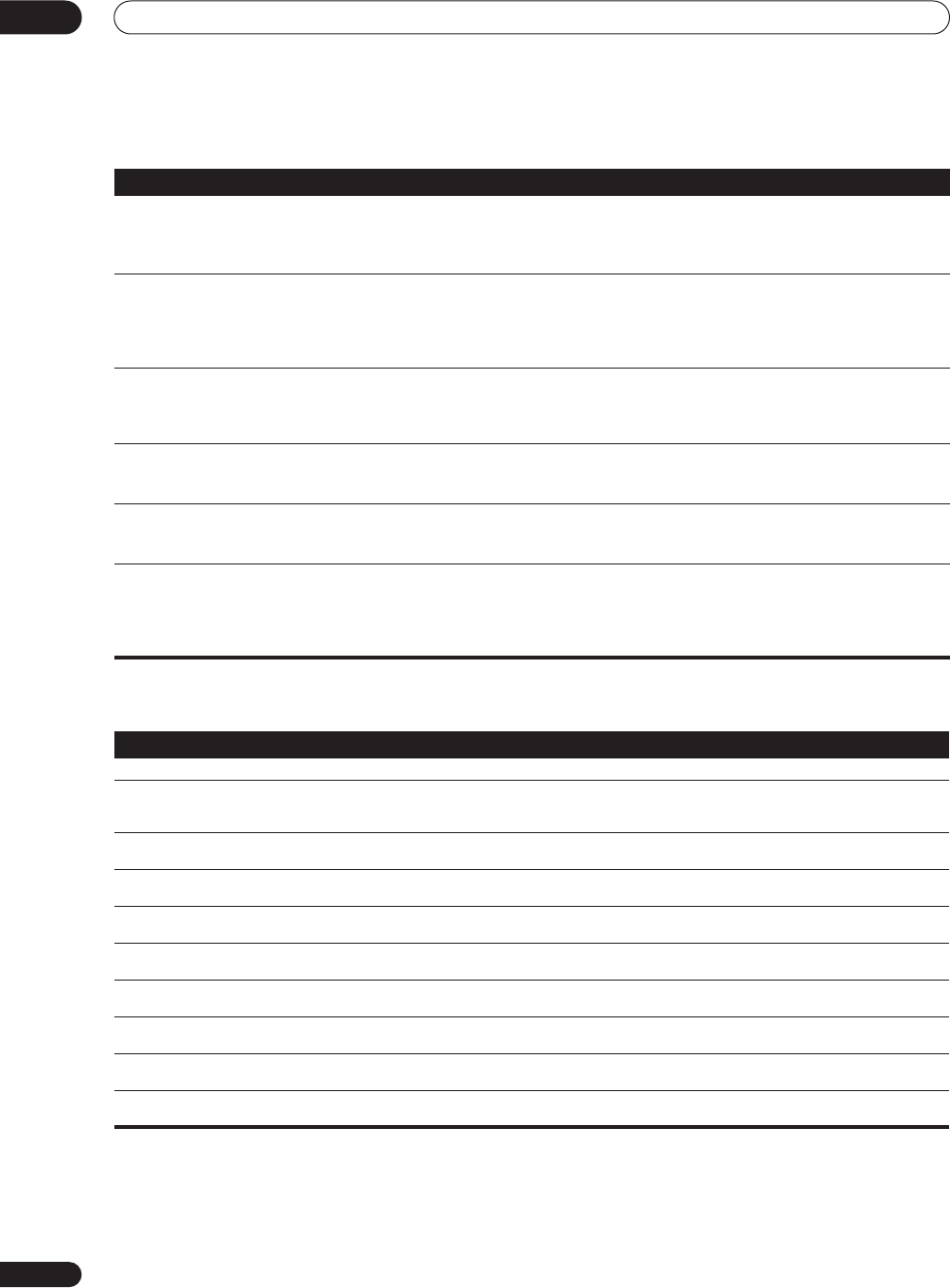
Additional information
12
82
En
i.LINK interface
i.LINK messages
You may see the following messages displayed in the front panel display when using the i.LINK interface.
Symptom Remedy
No sound is output. • Check that the source player is compatible with i.LINK audio.
• Check the output settings of the source player.
• Make sure that
i.LINK
or
AUTO
is selected using the
SIGNAL SELECT
button (see
Choosing the input
signal
on page 31).
The i.LINK indicator does not
light up even when an i.LINK-
equipped component is selected.
• Make sure that
i.LINK
or
AUTO
is selected using the
SIGNAL SELECT
button (see
Choosing the input
signal
on page 31).
• Check the i.LINK connections; use an i.LINK cable of less than 3.5 m.
• Check that the source components conforms to the i.LINK Audio format.
• Make sure that all components connected between the receiver and the source are switched on.
PQLS OFF
or
PQLS ON
is
displayed temporarily on your
player and the sound output is
discontinued.
• During playback through an i.LINK connection, if you change the settings for other i.LINK components,
the sound will be discontinued momentarily. This is not a malfunction.
The program format indicators
don’t disappear when SACD
playback stops.
• The program format indicators remain lit until another format source is input. This is not a malfunction.
You can’t get i.LINK to display
when using the
SIGNAL SELECT
button.
• Make sure your i.LINK source components are switched on.
• Check that i.LINK is assigned correctly (see
The Input Setup menu
on page 63).
After upgrading a component, it
is not recognized and cannot be
selected using the i.LINK
connection.
• You may need to reset the i.LINK database memory in the receiver (use the front panel):
With the receiver in standby, press
STANDBY/ON
while holding down
RETURN
. When you see
DB
CLEAR?
appear in the display, press
ENTER
, then
SETUP
again to confirm. When you’ve reset the i.LINK
database memory,
DB CLEAR SET
shows in the display. If
DB ERROR
is displayed, step through the
procedure again.
Message
Explanation
BUS FULL
The i.LINK bus has reached its capacity and cannot transmit any more data.
CANNOT LINK 1
The connection between the receiver and the selected i.LINK-equipped component is unstable. If the
i.LINK cables appear to be connected properly and both the receiver and i.LINK-equipped component are
on, switch both units off, then on again to re-establish the connection between them.
CANNOT LINK 2
The receiver can’t identify the selected i.LINK-equipped component. For example, the receiver may not be
able to identify an i.LINK-equipped personal computer.
LINK CHECK
The receiver is checking the i.LINK network. It does this when components are added to, or removed from
the network. The sound may be interrupted if this happens during playback.
LOOP CONNECT
The i.LINK network cannot function because the connected components form a loop. See
Creating an
i.LINK network
on page 52 for more on this.
NO NAME
When an i.LINK-equipped component has no name, this message is displayed instead of the proper
component name.
NO SIGNAL
A component is outputting an i.LINK signal that the receiver cannot reproduce. This receiver can only
reproduce signals from i.LINK-Audio-equipped components. See
About i.LINK
on page 52 for more on this.
PQLS OFF
This is displayed on a playback component when PQLS turns off during playback. The sound may be
interrupted momentarily when this happens.
PQLS ON
This is displayed on a playback component when PQLS turns on during playback. The sound may be
interrupted momentarily when this happens.
UNKNOWN
When an i.LINK-equipped component name cannot be recognized, this message is displayed instead of
the proper component name.
VSX_AX4ASi.book.fm 82 ページ 2006年6月8日 木曜日 午後12時23分


















